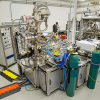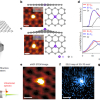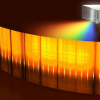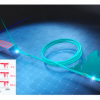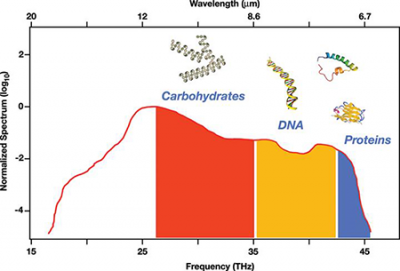
Researchers from the Attoscience and Ultrafast Optics Group at ICFO—The Institute of Photonic Sciences, Castelldefels, Spain, led by Professor Jens Biegert, in collaboration with the Laboratory for Attosecond Physics at the Max Planck Institute for Quantum Optics (MPQ) and the Ludwig-Maximilians-Universität (LMU) in Munich, Germany, have developed a new broadband and coherent infrared light source. The peak brilliance of the light source makes it an ultrasensitive detector for the infrared molecular fingerprint region, ideal to detect minute changes in the spectral features from cells or tissue which are tell-tale signs of DNA mutation or the presence of cellular malfunctions such as cancer. Their work is reported in a paper in Nature Photonics.
The mid-wave infrared is an extremely important range of the electromagnetic spectrum since the wavelength of the light can resonantly excite molecular vibrations. The absence of light sources that cover enough of the infrared spectrum with sufficient brilliance to detect minute concentrations originating from onco-metaboloids has been the main challenge in cancer detection. The new light source exerts extreme control over mid-wave infrared laser light with unrivalled peak brilliance and single-shot spectral coverage between 6.8 µm and 16.4 µm. The radiation is fully coherent and emitted 100 million times per second. Each laser pulse has a duration of 66 fs, which is so short that the electric field oscillates only twice. These characteristics, in combination with its coherence, make the light source a compact and ultrasensitive molecular detector.
Professor Jens Biegert and his colleagues at ICFO are currently investigating molecular sensitivity for the identification of cancer biomarkers on the single cell level using all optical techniques in the mid-wave infrared wavelength range.











